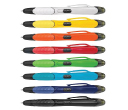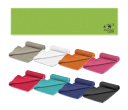Western Brands Target “Asianized” Market
 The size of the global middle-class is forecast will grow from 1.8 billion in 2010 to 4.9 billion by 2030 – with 85 percent of that growth coming from “Asia1.” This segment will not only hold higher income but also bring to the table a more evolved appetite for consumer products.
The size of the global middle-class is forecast will grow from 1.8 billion in 2010 to 4.9 billion by 2030 – with 85 percent of that growth coming from “Asia1.” This segment will not only hold higher income but also bring to the table a more evolved appetite for consumer products.
This phenomenal growth is spurring global marketers to introduce brands that cater exclusively to Asian markets, according to global marketing consultants Spire Research. In 2010, Levi Strauss launched its Denizen denim brand in China to cater to budget-conscious consumers outside of the country’s booming first-tier cities. Burberrysells its Blue Label brand of clothing and shoes (which are not positioned as “lower-quality”) almost exclusively in Japan. The aim has been to offer more fitted and petite clothing to young Japanese consumers.
While several marketers have introduced Asia-centric brands, almost all are confronted with a strategic decision, whether to launch a new brand, extend an existing one to new product categories or acquire a local brand.
A familiar approach to new brand launches in Asia/ EMs has been the introduction of ‘second brands’ which are cheaper, lower quality versions of the existing premium brands. This approach is typically adopted because consumers in these markets tend to be price-sensitive.There have been a number of prominent second brand launches in Asia. One of the most striking examples was Levi Strauss’s launch of its Denizen denim brand in China in 2010 to cater to budget-conscious consumers in second and third-tier Chinese cities. The airline industry affords other examples. In view of the rise of low-cost carriers, Singapore Airlines launched Scoot in mid-2012. The new airline, with fares 40% cheaper than full-service carriers, would initially fly to destinations in Australia and China. Australian carrier Qantas had pursued a similar strategy eight years earlier with the launch of its JV budget airline Jetstar.
Nokia is introducing Lumia, a Windows-based smart phone brand, to capture first-time users particularly in Emerging Markets. These phones will be pitched against similar devices powered by Google’s Android and are 30 percent cheaper than Nokia’s existing cheapest smart-phone running on Windows.
Research indicates that between 2011 and 2015 retail sales in Asia and Australasia will grow at an average rate of over 6 percent in volume and 12 percent in value. While growth prospects remain strong, the failure rate of new brand launches is high in Asia and Emerging Markets. In 2009-10, it is estimated that India witnessed 1,500 new brand launches – of which, only 5% survived.This underscores the need for prudent planning so that new brands and brand extensions truly connect with customer’s needs.
Spire says Asian consumers tend to reward brands that position themselves as premium and global. This explains why, for example, so many Asian brands tend to position themselves as Western (e.g. Bonia) or even Japanese (Creative Technology). Any hint that Asian consumers are being sold a low-quality product designed specifically for Asia is likely to be disastrous.On the other hand, a second brand at a lower quality-price point that is clearly global, or of a global quality standard, might actually work.


















